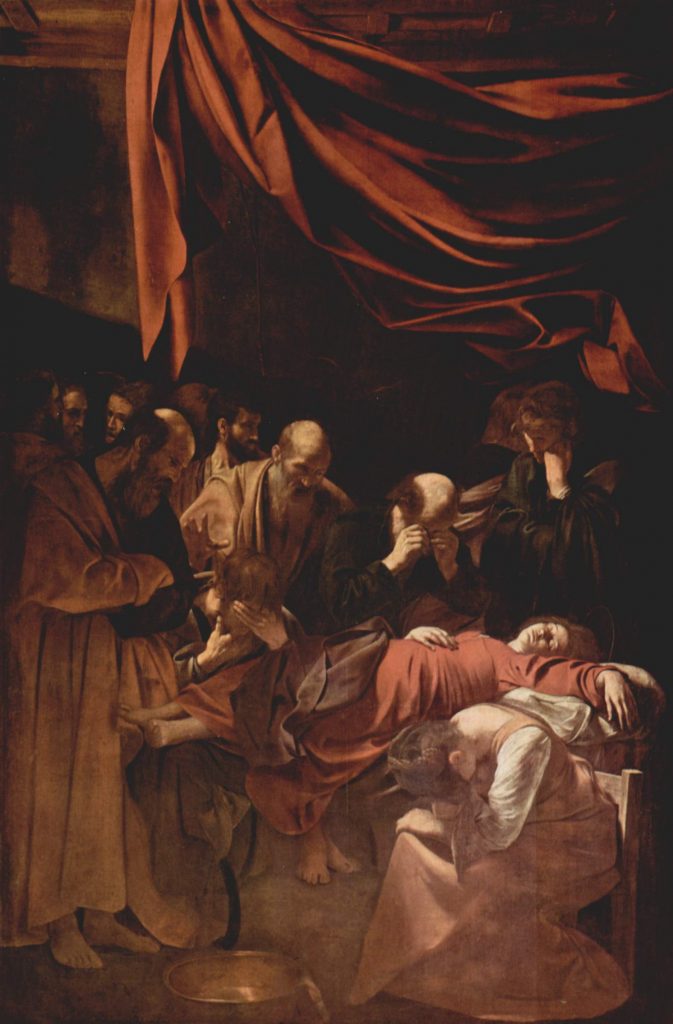Block Books and Baroque (1450-1750)
Summary:
In this week’s class, we learned about the Renaissance, Baroque, Rococo, and the golden age of type, as well as the arrival of newspapers, novels, and dictionaries. During the Renaissance, humanism, art, and science was flourishing as they started to break away from biblical subjects and the Church. It was also in the fifteenth century that it was the golden age of type. After Fust’s 42 line Bible in 1455, printing progressed very quickly. Germany became the centre of printing, but due to political unrest, many German printers moved to other European nations to develop and continue printing. Those who moved to Rome had a lot of business as the Pope was in Rome, rich, and interested in printing Bibles to encourage the spread of the Church. Many “Roman-style” typefaces (typefaces that came out post-Gothic period) -also called Antique, Venetian or Old Style- were created during this period.
During the Baroque period (the 1600s), where art had a serious heavy style that was inspired by what was happening in the Church, it was a relatively quiet time for graphic design innovation. In the 1700s, the first transitional typeface was created, the Romain du Roi, by King Louis XIV. Transitional typefaces represented the departure of Old Style typefaces and had a contrast between thick and thin strokes.
The Rococo period emerged from Louis XIV and had soft pastel colours, with a lot of whites, and fancy motifs. During this time, transitional typefaces continued to be created. Along with the development of transitional typefaces, the Caslon type specimen was invented by William Caslon. It had all the different sizes, letters, etc. of a type that would be gathered together with other typefaces to present as examples.
I was very interested in the different typefaces that emerged and were created/developed. I love typography and seeing the beginning of it excited me. As each new typeface was created for either convenience, legibility, etc., I can see more and more how modern typefaces have developed and how they are different from one another; there are so many different ways to create a new typeface!
Research:
For this time period, I assigned to the subject of “art/colour” and have decided to focus my research on Baroque art.
Baroque art lasted from 1590 to 1720. This style originated in Rome and was characterized by self-confidence, dynamism, and a realistic approach to depiction done through dynamic movement, bold realism, and direct emotional appeal. New techniques were also developed during the Baroque period to enhance the atmosphere of the paintings. These included tenebrism- use of extreme contrasts of light and dark in figurative compositions to heighten their dramatic effect- and chiaroscuro- light and shadow defining three-dimensional shapes.
Baroque art was not a monolithic style. It contained at least three branches: religious grandeur, greater realism, and easel art.
Religious grandeur was a triumphant, extravagant, and melodramatic style of religious art. Baroque art reflected the religious tensions of the age: the Catholic church in Rome wanted to reassert itself in the wake of Protestant Reformation. Catholic-inspired Baroque art was intended to be propagandistic and thus, tended to be large scales of public works, such as frescos and wall-paintings for the ceilings and vaults of churches and palaces. Baroque art that fell under religious grandeur were commissioned by the Catholic Counter-Reformation and by the courts of absolute monarchies in Europe.

https://upload.wikimedia.org/wikipedia/commons/c/c5/Michelangelo_Caravaggio_069.jpg
Greater realism was a more life-like/naturalist style of figurative composition. Many important artists influenced the development of greater realism. These include Caravaggio’s bold and physical presence of figures, Velazquez’s life-like approach to religious paintings, Carracci’s new form of movement and exuberance, and Castiglione’s realistic form of rustic Biblical genre painting with animals.

https://dnq5fc8vfw3ev.cloudfront.net/thumbs/aspect-large-normal/77000/77003/Carracci/Farnese-Ceiling-Fresco.jpg?ts=1505655060
Easel art was Baroque art in the Protestant Holland (also known as the Dutch Golden Age). This form of art was aimed at prosperous bourgeois householders and led to enhanced realism in portrait art and landscape painting. It depicted many non-religious themes- unlike the regions of Europe with strong Catholic influence- such as portraits, still lifes, and mythical subjects.

https://upload.wikimedia.org/wikipedia/commons/thumb/7/7f/Retrato_del_Papa_Inocencio_X._Roma%2C_by_Diego_Vel%C3%A1zquez.jpg/300px-Retrato_del_Papa_Inocencio_X._Roma%2C_by_Diego_Vel%C3%A1zquez.jpg
The Baroque period was a serious and heavy style inspired by what was happening in the Church. The period was full of self-confidence, dynamism, and naturalism, and the art had a focus on movement, bold realism, and direct emotional appeal.
_
References:
- Judy’s Lecture Notes
- “Baroque Art (C.1600-1700).” American Gothic, Grant Wood: Analysis, American Gothic, Grant Wood: Analysis, www.visual-arts-cork.com/history-of-art/baroque.htm
- Tate. “Baroque – Art Term.” Tate, Tate, www.tate.org.uk/art/art-terms/b/baroque
- Britannica, The Editors of Encyclopaedia. “Tenebrism.” Encyclopædia Britannica, Encyclopædia Britannica, Inc., 16 Oct. 2015, www.britannica.com/art/tenebrism
- Britannica, The Editors of Encyclopaedia. “Chiaroscuro.” Encyclopædia Britannica, Encyclopædia Britannica, Inc., 13 Oct. 2015, www.britannica.com/art/chiaroscuro

